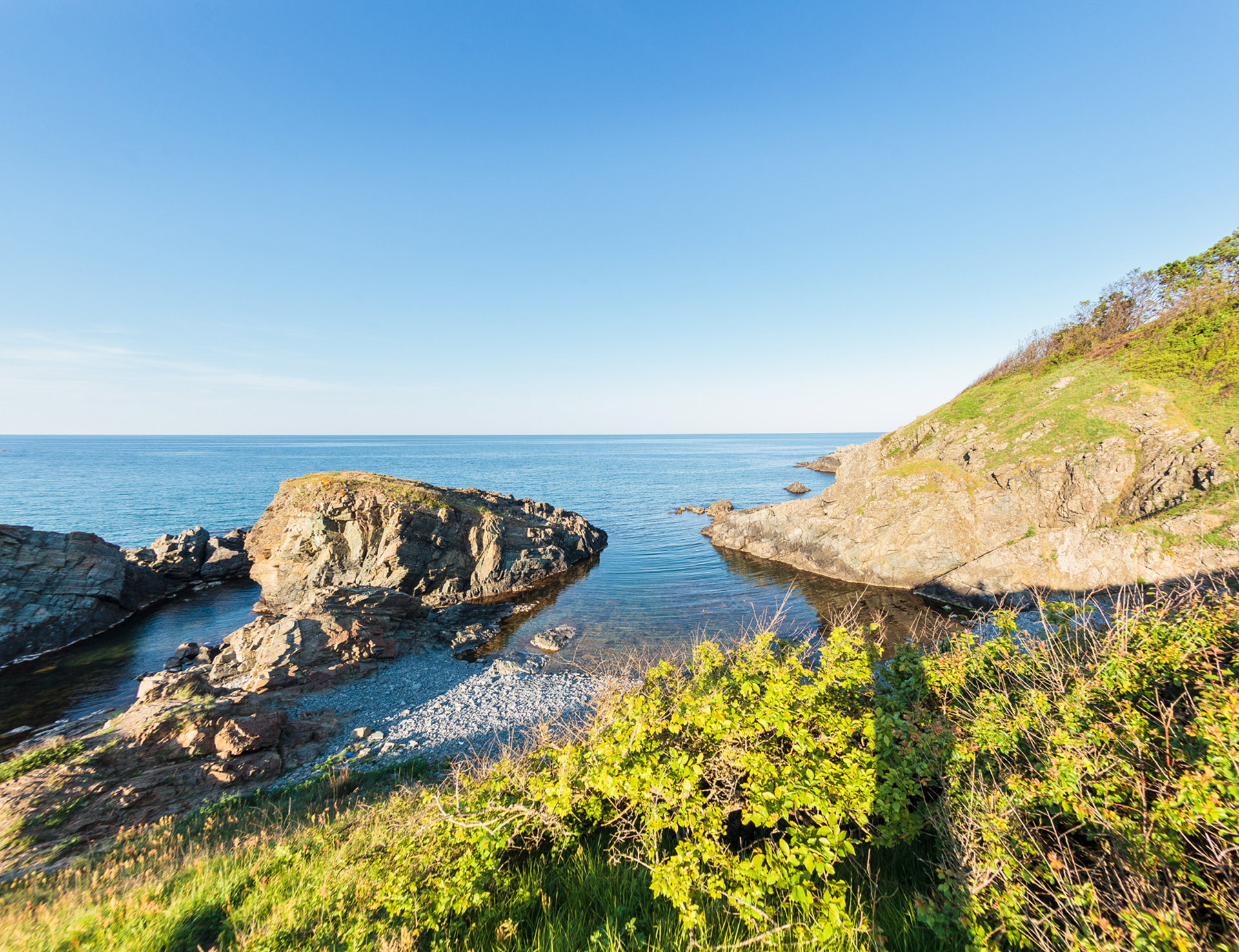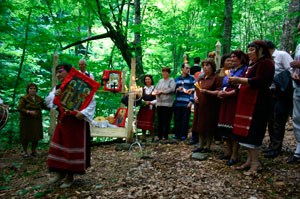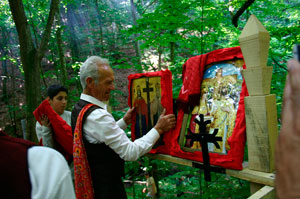
Gramatikovo Village
It is located 25 kilometers northeast of the town of Malko Tarnovo and 68 kilometers of the city of Burgas, 300 m a.s.l.
The name of the village has not been changed from its establishment (probably around ХVІ century) until today.
Population: 382 residents
Gramatikovo is the largest village on the territory of Strandja Nature Park. In the beginning of the twentieth century it numbered about 1,500 residents.
The village is situated on a high hill over the valley of Veleka river. It offers spectacular panoramas of the Rezovo ridge and the Turkish section of Strandja. One of the most representative and preserved oak-beech forests are located to the north.
Its surroundings are known since Antiquity with their rich ore deposits, Thracian mounds and necropolises, traces of an old Roman road, and ancient settlements.
“Strandja sings” - the first for Bulgaria folklore singing competition and founder of the fairs in Koprivshtitsa and Rojen – was held in Gramatikovo in 1960.
Only two houses in the old Strandja architectural style have been preserved in the village.
The main office of the eponymous State Game Breeding Station is located in Gramatikovo.
Particularly interesting and worth visiting is “The Forest Collection” – a representative exposition in the center of the village, dedicated to the biological diversity of Strandja and the history of the forestry in the region.
South-Pontic vegetation – Rhododendron ponticum, Ilex, ruscus, hart’s tongue, and Smilax excels – can be seen in the surroundings of Gramatikovo.
The holiday of the village is celebrated on the Day of St. Iliya.
The symbol of Gramatikovo is a marble plate with a hand and quill portrayed on it (it is preserved in the historical museum of Malko Tarnovo).
Holy Forty Martyrs Church
This cultural monument dates back to the end of the eighteenth century. The Church was burned down by the retreating Circassians in 1877, and thus the new Holy Forty Martyrs Church was built in its place. It hosts the largest collection of icons of the painter Stavro Mihaylov from Lozengrad.
Chapels
There are a lot of chapels around the once crowded village, some of which have survived until nowadays. Among the most celebrated and visited chapels are the following: “St Iliya” – located 2 kilometers south of the village; “St. George” – located to the northwest, in the cemetery of the village; “Holy Mother of God” – located 5 kilometers south of the village, in the Kachul area; “Ss. Kostadin and Helena” – a wooden structure about 1 kilometer east of the village, in the Yazmitsata area.
Holy Trinity Chapel
One of the most interesting chapels in Strandja. It is located between Vizitsa and Gramatikovo villages, in the Kotvinite area. The chapel was built in 1970, opposite to the entrance of a natural cave. The descent is possible via stone steps. There is a demolished horizontal bifurcation 2-3 meters from its entrance. In the other bifurcation, whose bottom you can reach without difficulties by using the stone steps, there are relics from folk-style ceramics. Water is dribbling from the walls of the cave, which is believed to be a holy spring and to have healing properties. The legend says that every time you enter the cave you clear yourself from sins.
Next to the Holy Trinity Chapel are the remnants of an older Medieval Church, and slightly away from it visitors can see traces of the Kotvinite hamlet settlement.
An 800-year-old Quercus hartwissiana is growing just 60 meters northeast of the Holy Trinity Chapel.
A recreation area has been built next to the chapel itself.
The Great Ayzma (The Great Holy Spring)
 It is located in the Vlahov gorge, one of the tributaries of Veleka river. The holy chapels of the five fire-dancing villages in Strandja – Bulgari, Kosti, Gramatikovo, Kondolovo, and Slivarovo – are located on the left bank of the gorge.
It is located in the Vlahov gorge, one of the tributaries of Veleka river. The holy chapels of the five fire-dancing villages in Strandja – Bulgari, Kosti, Gramatikovo, Kondolovo, and Slivarovo – are located on the left bank of the gorge.
The fire-dancing holiday is always celebrated on June 3 (old style) in Bulgari village. The residents of the five villages start a fire-dancing procession towards the Great Holy Spring in the Sunday preceding the Ss. Constantine and Helena holiday. At the head of each procession are the icons of the saints, and the worshippers walk to the sound of a bagpipe and drum. They present sacrificial gifts and perform the “washing away” ritual with holy water. People believe that on this very day the water has the strongest healing properties and that all holy springs in Strandja “open up” precisely on this day.
 Upon arrival at the spot, the people from each village head towards their wooden structure, place the icons on the shelf and kiss them. They put the gifts – money, towels, ritual breads – in front of them. Everyone fills in water from the holy spring. The full containers are arranged next to the icon and basil is placed in each of them. The water and the basil are taken home “to bring health.” After the boiled mutton is distributed among the people, chain dances begin. In the past, the fire-dancers from Kosti village “got inspired” and danced at the Holy spring, while those from Bulgaria village “got the inspiration” in their village. And so they were dancing the entire night, and were leaving at dawn.
Upon arrival at the spot, the people from each village head towards their wooden structure, place the icons on the shelf and kiss them. They put the gifts – money, towels, ritual breads – in front of them. Everyone fills in water from the holy spring. The full containers are arranged next to the icon and basil is placed in each of them. The water and the basil are taken home “to bring health.” After the boiled mutton is distributed among the people, chain dances begin. In the past, the fire-dancers from Kosti village “got inspired” and danced at the Holy spring, while those from Bulgaria village “got the inspiration” in their village. And so they were dancing the entire night, and were leaving at dawn.
The people in Strandja believe that the circular space at the Great Holy Spring is sacred for stepping into the fire, because it is the place the first fire-dancers danced. This is also the place where grandmother Zlata – the last legendary fire-dancer in Strandja – stepped into the fire for the first time.
The last fire-dancing festival took place in the summer of 1947 at the Great Holy Spring. The fire-dancers from Bulgari village danced, but there was no fire. The wooden structures along the gorge were still visible, though heavily damaged, up until the beginning of the 1980s.
The fire-dancing procession was renewed in 2005, at the initiative of the Directorate of Strandja Nature Park, after a 60-year interruption.
The place is accessible from each of the five villages along the marked routes.
State Game Breeding Station - Gramatikovo
Its territory covers an area of 29 000 ha and the sporting tourism is actively developed, largely due to the excellent conditions that have been created – modern watchtowers for selection hunt, road network, modern hunting base, etc. The State Game Breeding Station has three shooting lodges for hunting activities – in Kachul and Petrova meadow areas, and in Kondolovo village. Impressive and worth visiting is the “Forest Collection,” dedicated to the biological diversity and the history of forestry in the region. The main game species – red deer, roe deer, wild boar, and Eurasian woodcock – are of large enough quantities and enhanced performance.
Nestling at the foot of the green hills of Veleka river, next to the famous spring with nice, cold water the shooting lodge in Kachul area is in close proximity to the dendrological collection of State Game Breeding Station - Gramatikovo. The picturesque nature, the trophy quality game and the well-developed shooting base are excellent prerequisites for the successful development of sporting tourism.
Telephone: 05958/ 230; Fax: 05958/ 231
Arboretum
It is located in the Kachul area, near Veleka river, and covers an area of about 30 ha. The arboretum contains a rich collection of exotic trees and shrubs.
Gramatikovo Forest Directorate started the construction of the arboretum in 1958-59. The first saplings that were taken out of it serve as foundation for the future collection of local and mostly exotic tree species. Seeds of black pine, Pseudotsuga, juniper, Abies concolor, Picea punges, Abies cephalonica, Abies pinsapo, Pinus radiate, cryptomeria, Sequoia sempervirens were sowed in the next few years, and cedrus, larch and bamboo have been imported as well. The species imported from the European, Asian and North-American flora are developing successfully in the new environment. The tree habitats of the Indochinese bamboo give the area a rather exotic outlook even today.
The creation of a new collection of the rich local dendroflora in Strandja – rare and endangered vegetal species (endemics, tertiary relics, pontic species) typical for the mountain - began in 2001.
